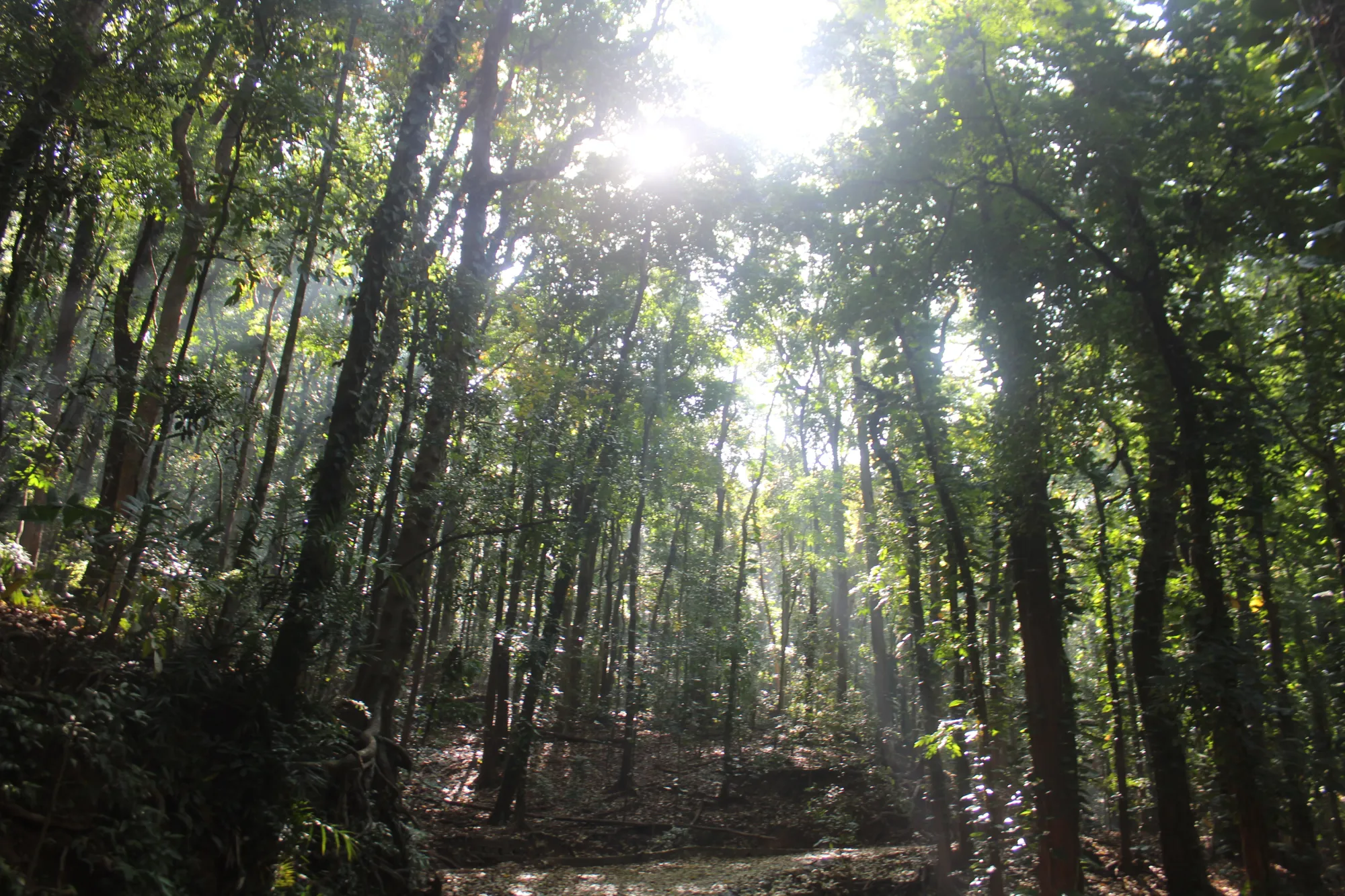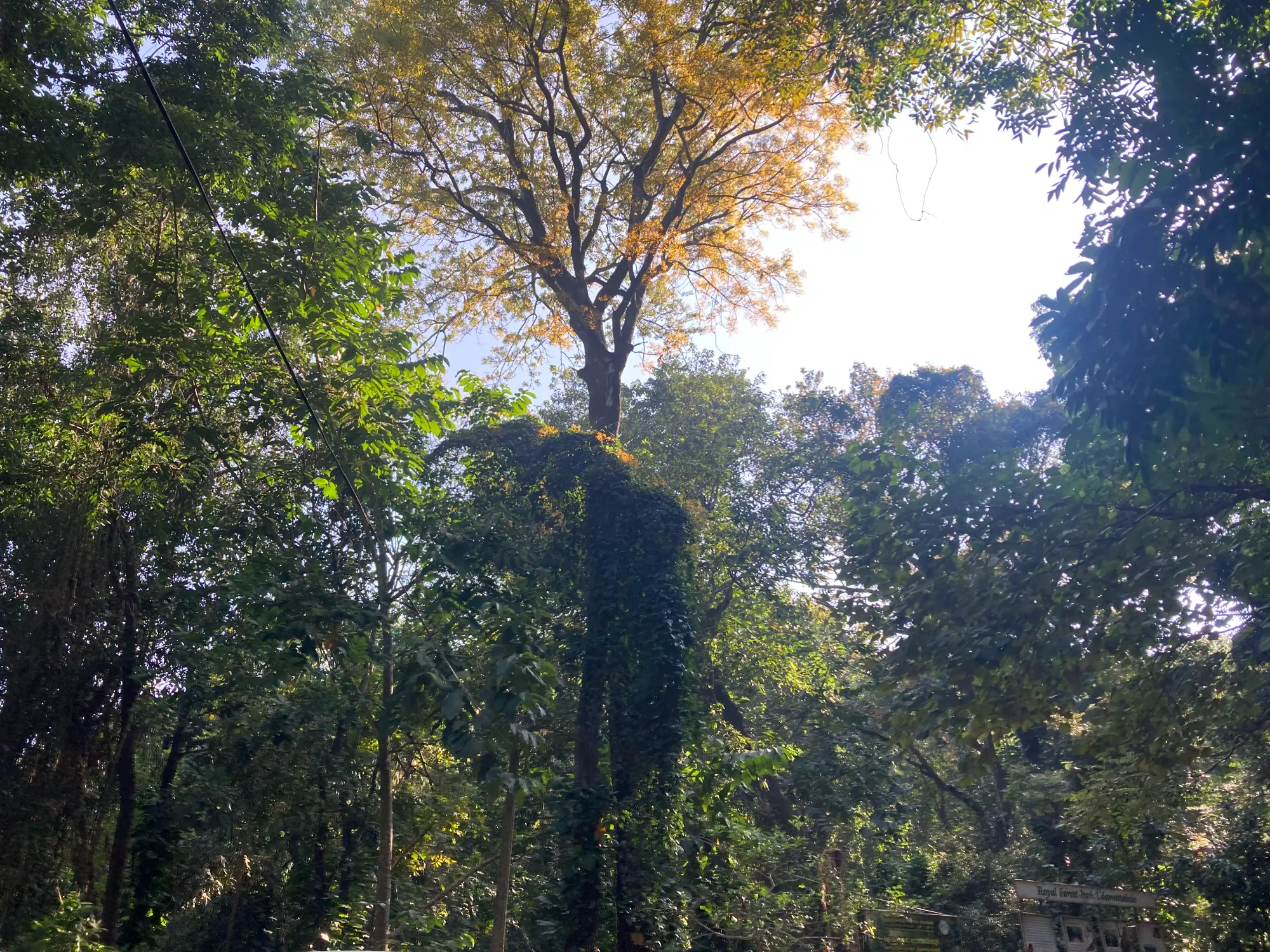
Udawattakele Sanctuary
Udawattakele Sanctuary is a forest reserve located in the heart of Kandy, Sri Lanka. This reserve serves as an urban forest park, offering tranquility away from the urban environment. Covering approximately 104 hectares which is about 257 acres, the sanctuary is a significant asset to both the local environment and tourism. This travel guide aims to provide all the necessary information you need for visiting this wonderful sanctuary.
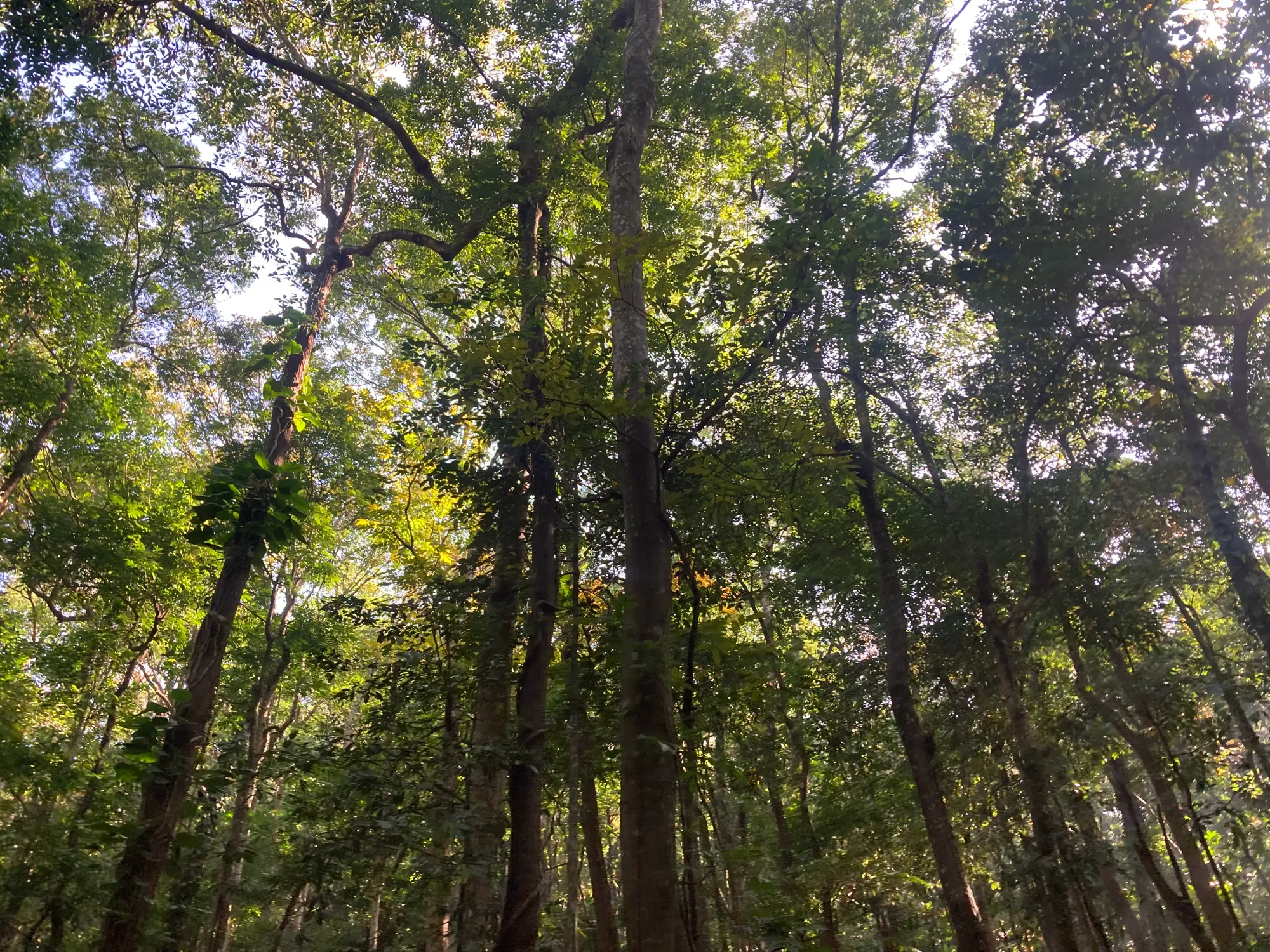
History of Udawattakele Sanctuary
The historical roots of Udawattakele Sanctuary are deeply connected with the royal and cultural history of Kandy, one of Sri Lanka's ancient capitals. The forest was originally designated as a royal forest reserve for the Kandyan Royalty. It served as a pleasure garden for the royals and was closely associated with the Royal Palace of Kandy, which itself dates back to the 14th century. During the time of the British invasion, the forest was used by Royals to hide and retreat to safer areas.
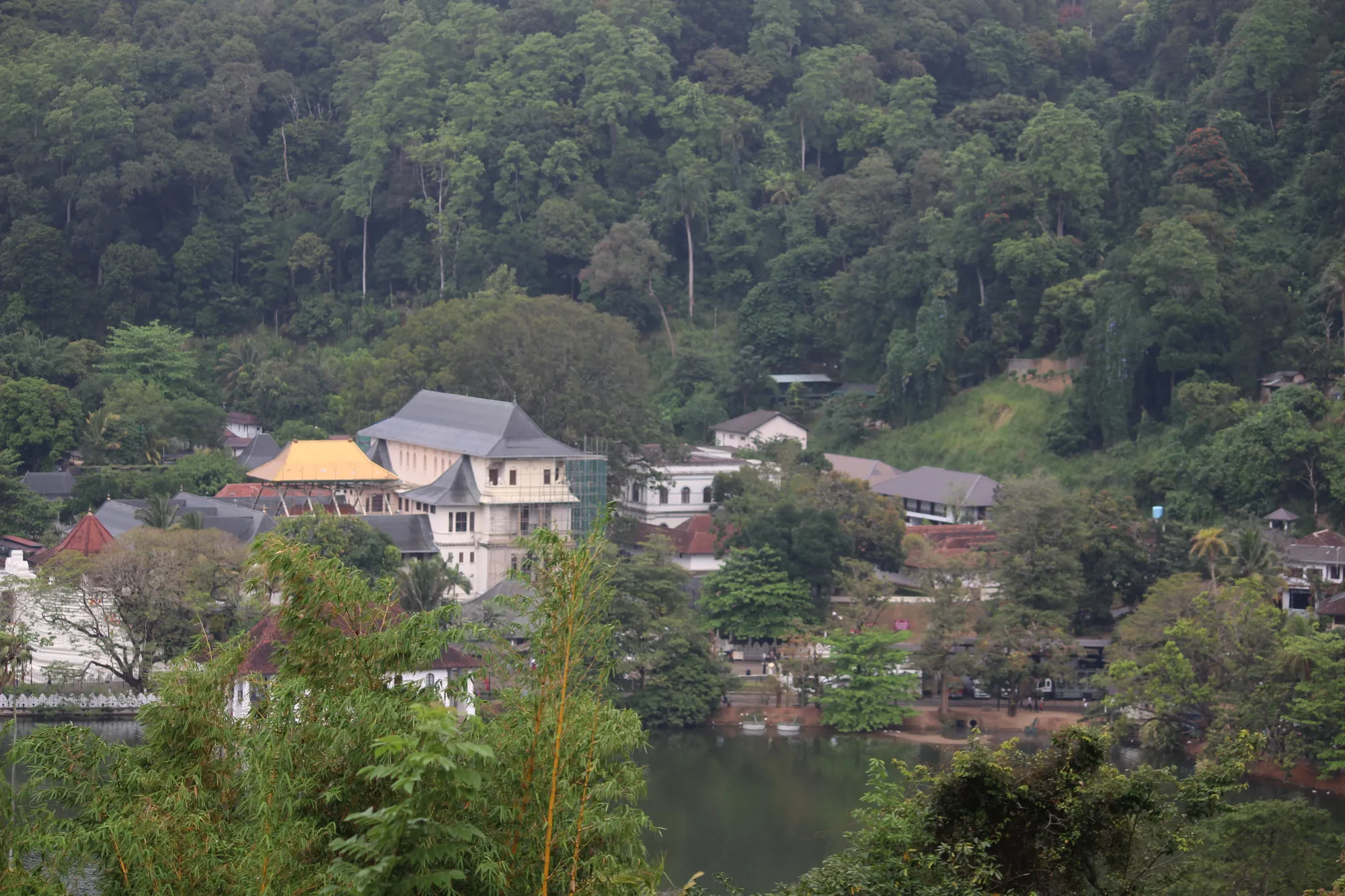
During the Kandyan Kingdom era, the forest was off-limits to the general public. It was said that the area was patrolled by royal guards to ensure that no one entered the forest without permission. The sanctuary was also home to hermit monks who lived in seclusion, practicing meditation. Several ancient temples and hermitages, some of which still exist today, were built within the sanctuary.
Udawattakele was declared a forest reserve in 1856. It was one of the first forests in Sri Lanka to receive formal protection, highlighting its ecological and social importance. Since then, it has been a protected site and transitioned into a sanctuary open for public visits in 1938.
The sanctuary has undergone some changes over the years, but it remains an ecological treasure. Today, it not only serves as a natural habitat for various species but also as an educational site, showcasing the rich historical tapestry that has been woven over hundreds of years.
Significance of the Sanctuary
Udawattakele Sanctuary serves multiple functions that make it a place of high significance, not just as a tourist attraction but also as a unique ecological, cultural, and religious site.
The sanctuary serves as a crucial green lung in the heart of Kandy. In a rapidly urbanizing world, such green spaces act as vital buffers that contribute to air purification, climate regulation, and biodiversity conservation. It is an essential habitat for various species of flora and fauna, some of which are endemic to Sri Lanka. The sanctuary is considered a bio-reserve, and its conservation plays a critical role in sustaining the broader ecosystem of the region.
The sanctuary is closely connected with the cultural history of Kandy. Once a royal forest reserve, it has witnessed significant historical events and developments. The sanctuary itself is a living museum that tells the story of Kandy's past, offering visitors an opportunity to step back in time.
Udawattakele Sanctuary is also an important place for religious practices and beliefs. Within its boundaries, several Buddhist monasteries and meditation hermitages exist, some of which are centuries old. These places are still active and contribute to the sanctuary's importance in the religious landscape of Sri Lanka.
Flora and Fauna
The Udawattakele Sanctuary serves as a thriving habitat for a diverse range of plant and animal life. Its position in an intermediate climatic zone allows for the growth of both wet and dry zone plants, resulting in a rich variety of around 400 plant species. This include Ironwood trees, the national tree of Sri Lanka and the exotic Mahogany trees. The forest undergrowth is equally rich with native lianas like the "Wevel" and a variety of ferns and orchids.
When it comes to wildlife, the sanctuary is home to 15 mammal species, including the commonly sighted Toque Monkeys and more elusive creatures such as Barking Deer and Wild Boar.
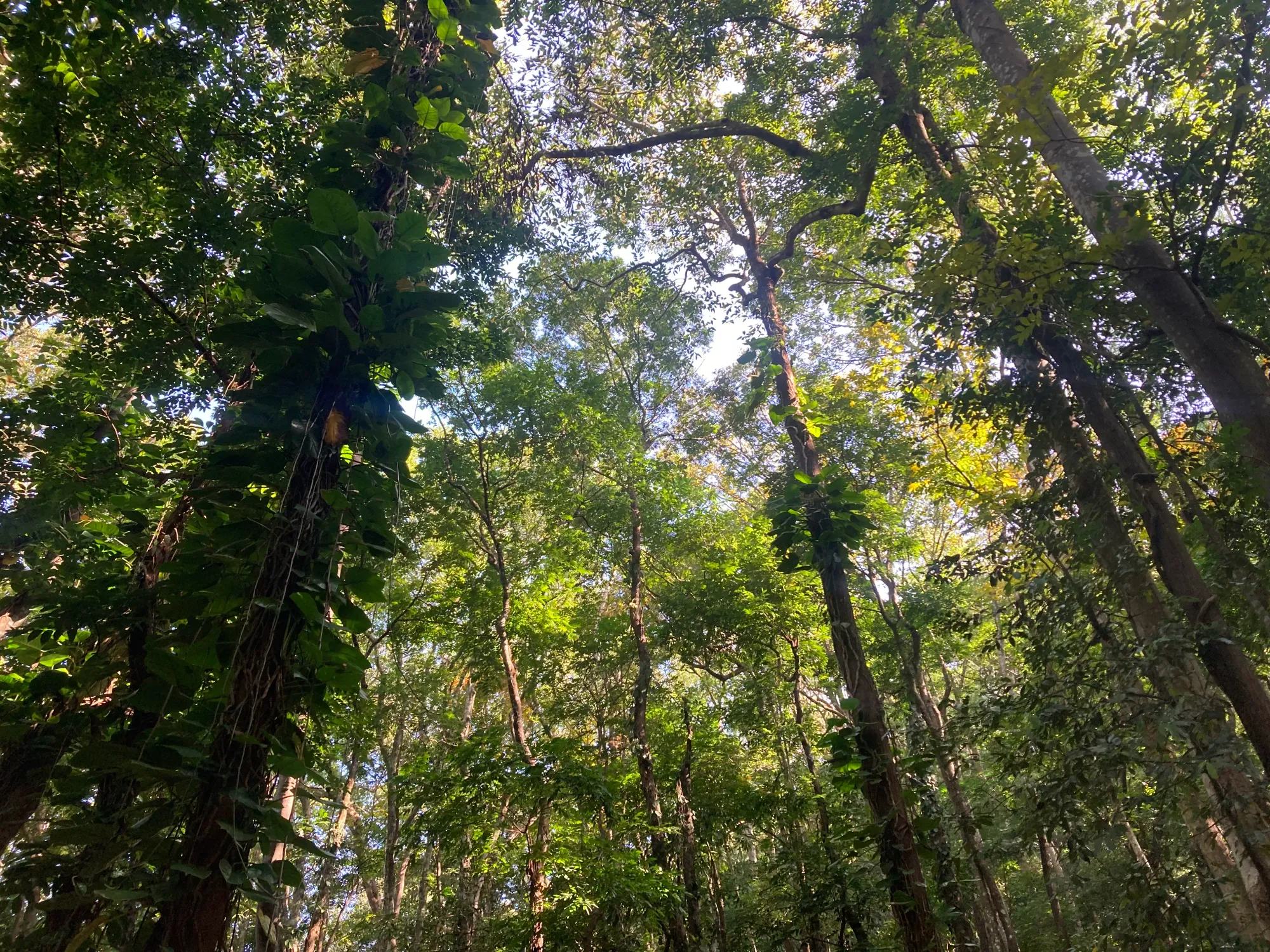
Bird life is abundant, with over 80 species recorded, including the Black-rumped Sharma and the endemic birds such as the Sri Lanka Grey Hornbill, Dark fronted babbler and Layard Paraquet. Other bird species like Owls, Kingfishers, Woodpeckers and Eagles can also be seen within the forest. The sanctuary is also a hotspot for butterflies, which adds to its vibrant atmosphere.
The Royal Pond within the sanctuary supports species like the Black Turtle and fish such as Tilapia. This pond contributes to the sanctuary's complex ecosystem, offering a balance between terrestrial and aquatic environments.
The richness of the sanctuary's flora and fauna adds layers of depth to the visit, making it a focal point for naturalists, researchers, photographers, and those simply interested in enjoying the beauty of nature.
Highlights of the Udawattakele Sanctuary
Udawattakele Sanctuary boasts several natural and historical highlights that offer visitors an enriched experience of Sri Lanka's ecological and cultural heritage. Each highlight brings its unique aspect to the sanctuary, contributing to its status as a must-visit location in Kandy.
The Royal Pond
The Royal Pond in Udawattakele Sanctuary is believed to have been used by the Kandyan royal family. Legend has it that a tunnel once connected it to Kandy Lake, possibly for secretive movement or as an escape route. The pond is also the subject of local lore, which suggests that a vessel containing the treasures of a Kandyan king lies at its bottom. Today, it remains a serene spot within the sanctuary, reflecting the surrounding forest and offering a quiet respite for visitors.
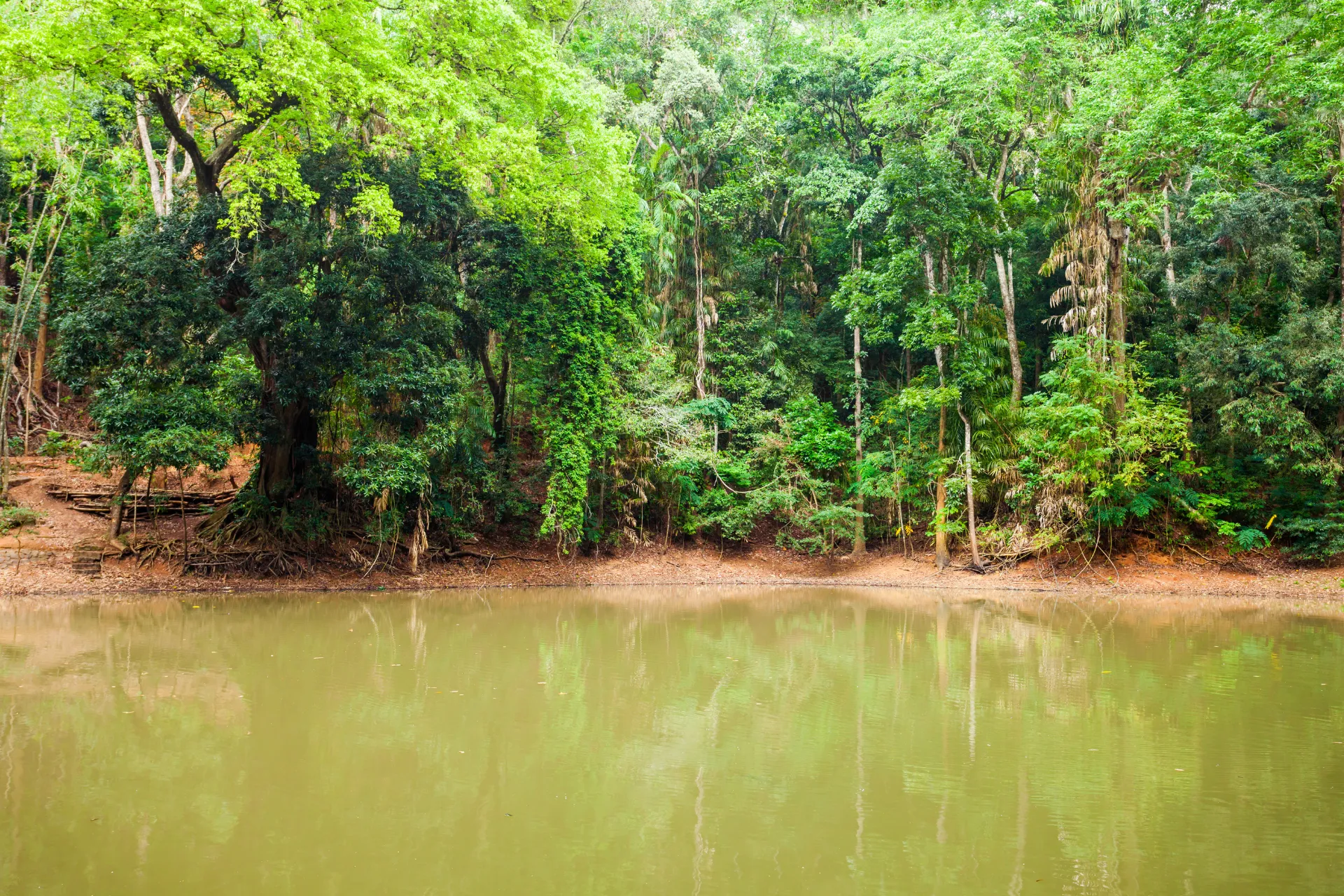
The Giant Bamboo
This impressive species, known as Giant Bamboo, stands tall within the sanctuary's boundaries. An introduced species for ornamental purposes, it is native to Southeast Asia and is remarkable for its considerable height and diameter, making it a striking feature against the sanctuary's diverse greenery. It reaches up to a height of about 35 meters and a diameter of 35 centimeters.
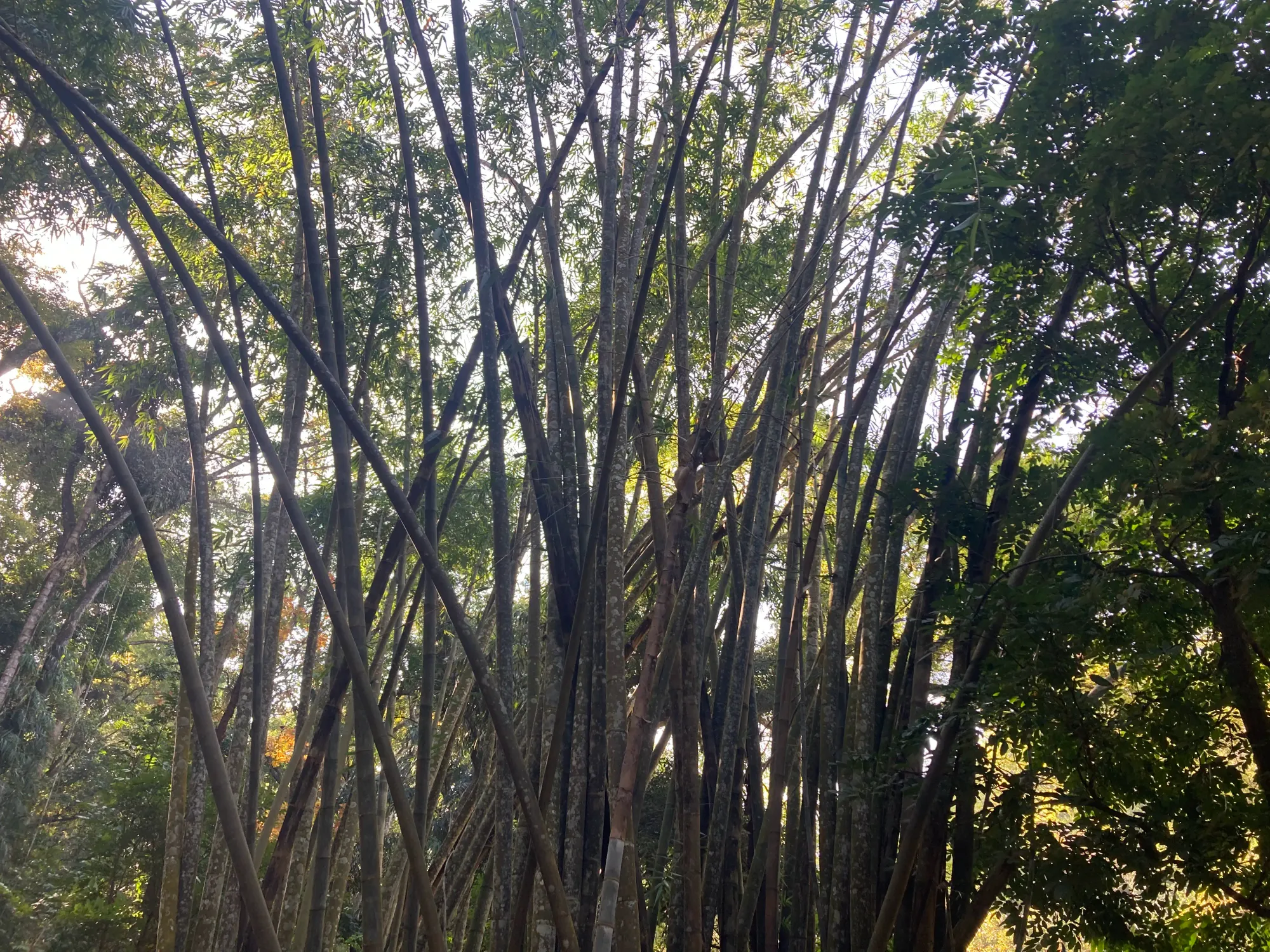
Ironwood Forest
The Ironwood tree, known in Sinhalese as 'Na,' is Sri Lanka's national tree and a significant part of the sanctuary's ecosystem. A specific patch of forest within the sanctuary is dedicated to these trees and they are believed to have been planted in 1926. The ironwood trees are known for their bright red young leaves and fragrant white flowers. The timber of this tree is hard and durable and is often used in the construction of sacred buildings.
Hermitages and Caves
Udawattakele Sanctuary has ancient hermitages and caves that once served as secluded retreats for Buddhist monks seeking solitude and meditation. There are two hermitages, the "Senanayaka Aramaya" and the "German Temple," that currently fuction as meditation centers.
Two caves known as "Chitta Vishuddhi Lena" and "Maitree Lena," continue to be venerated spaces that are used by monks for meditation.
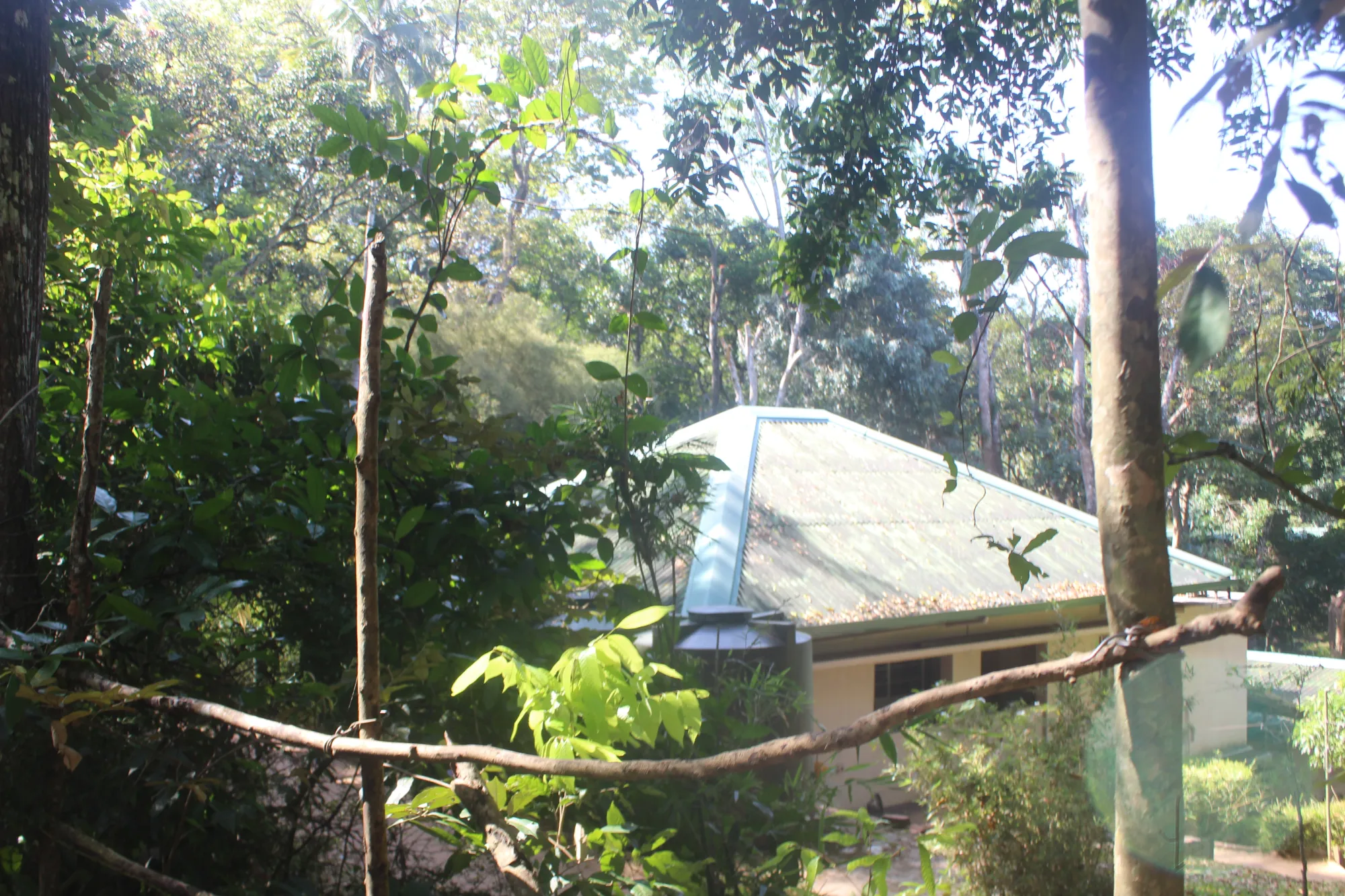
Pus-wel (Giant Liana)
The Pus-wel, also known as Giant Liana, stands as an extraordinary exhibit of Udawattakele Sanctuary's flora. This colossal vine, estimated to be over 200 years old, sprawls majestically across a large area of the Udawattakele forest.
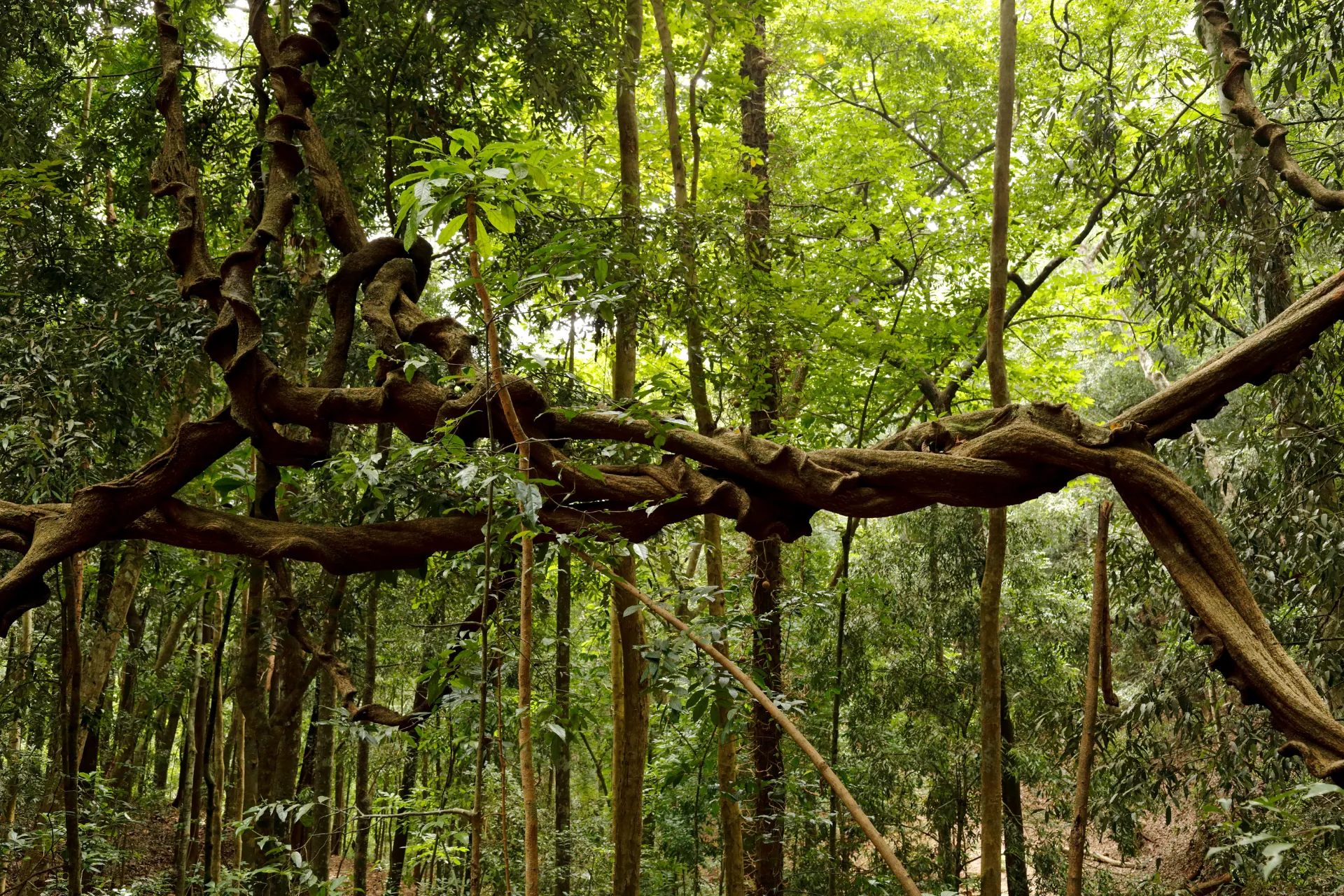
Senkanda Cave
This cave is associated with a hermit named 'Brahmin Senkada,' who lived there in the 2nd century AD. More than 1200 years later, King Wickramabahu chose Kandy as the capital for his kingdom and named it as 'Senkadagala' in honor of the Brahmin. Even in modern times, Senkadagala is used as another name for Kandy.
View Points
Udawattakele Sanctuary has several points that afford stunning views of the natural landscape and Kandy city. These view points are often the rewarding end to various hiking routes within the sanctuary. Locations like Elephant Rock and Kodimale Summit are particularly popular for their vistas.
From these elevated spots, visitors can appreciate sweeping views of Kandy and the surrounding hills. These vantage points serve as excellent opportunities for photography, birdwatching, or simply appreciating the sanctuary's ecological richness.
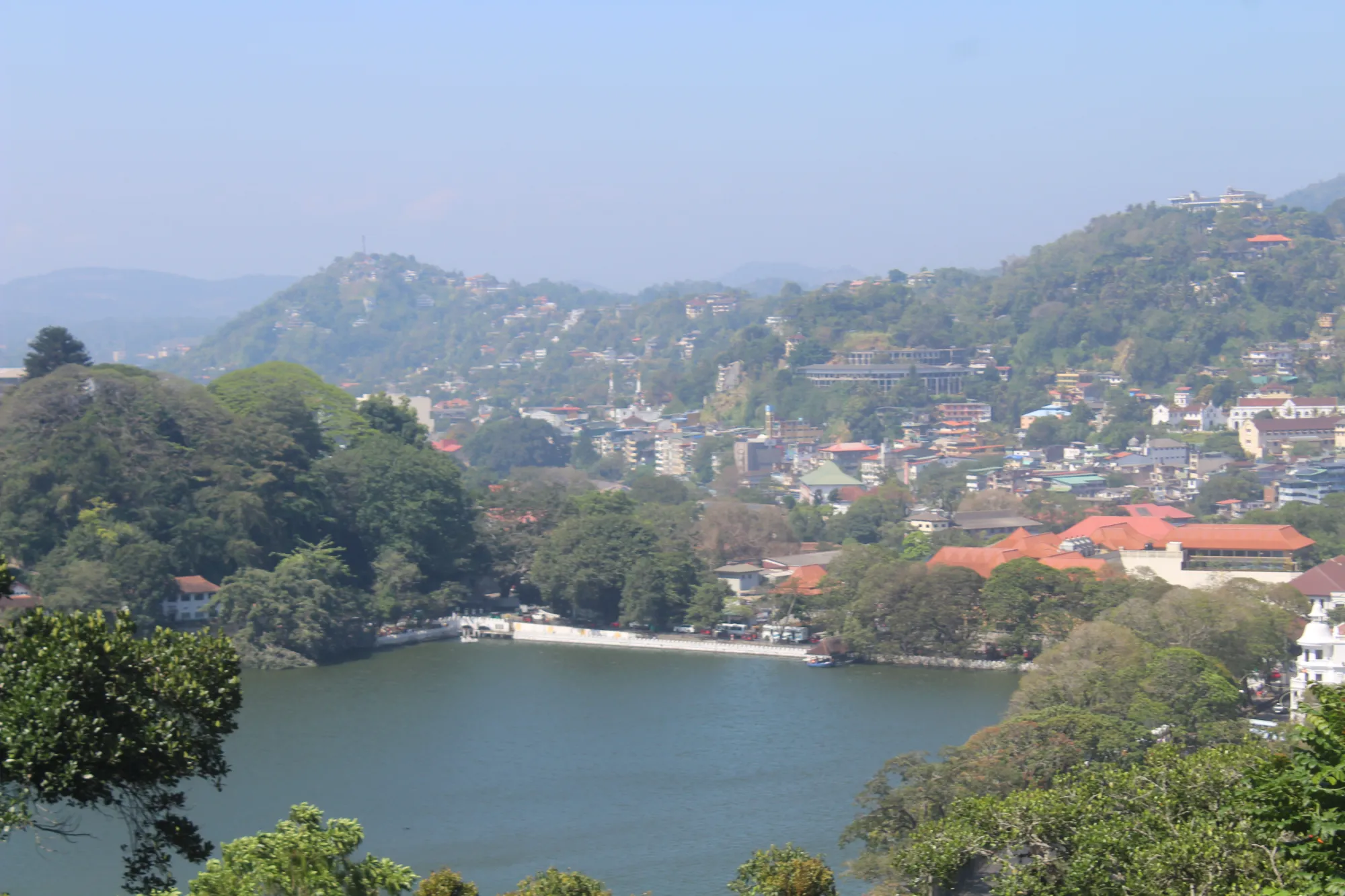
Trails and Roads of Udawattakele Sanctuary
Udawattakele Sanctuary has several trails and roads, each with its own charm, providing visitors with different experiences within the sanctuary's natural beauty.
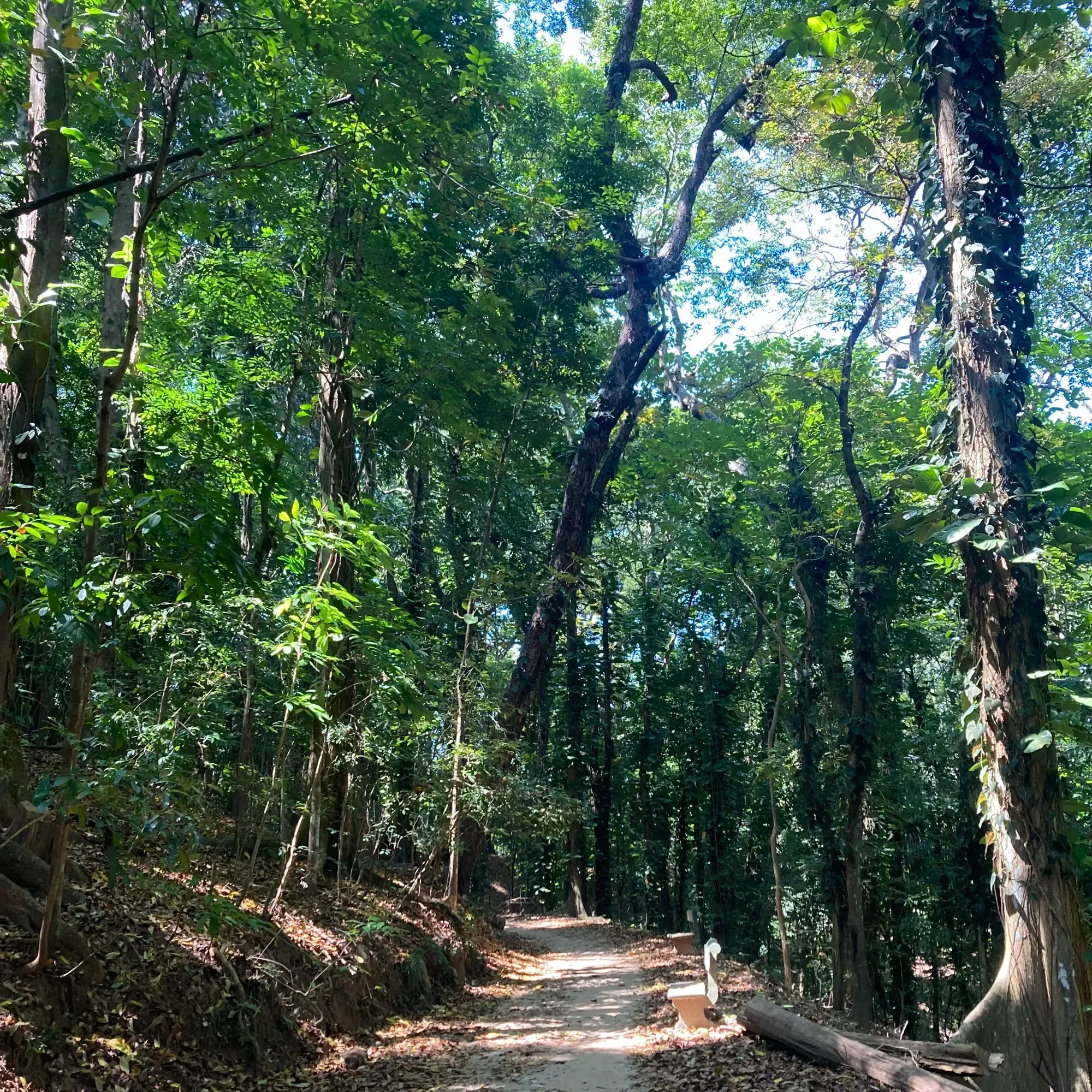
Lady Horton's Road
Constructed in 1834 by Governor Wilmot Horton in remembrance of his wife, Lady Horton's Road is the main road passing through Udawattakele. Stretching for 3 kilometers, it was named in memory of the governor's wife and was also the first road built in the sanctuary.
Lover's Walk
This enchanting trail is a favorite for couples and solitude seekers alike and encircles the serene Royal Pond.
Lady Gordon's Drive
Constructed in 1881, Lady Gordon's Drive is another trail dedicated to the wife of a governor, and ideal for birdwatching. The trail is especially known for sightings of the Fish-owl, which can be observed here at various times of the day.
Kodimale Trail
The Kodimale Trail is a journey to a historic summit, which leads adventurers to the highest point in Udawattakele. The summit, known as Kodimale or Flag Point is about 550 meteres high. During the time of the Kandyan Kingdom it was used to hoist the national flag of Sri Lanka.
These trails and roads are not just pathways through the forest. They are storied routes that offer a glimpse into the sanctuary's past and present. Try to explore the different routes and experience what they have to offer.
Visitor Information
Udawattakele Sanctuary is designed to accommodate a range of visitors, from casual nature lovers to more serious hikers and researchers. The sanctuary's entrance is well-marked, and the ticket counter provides general information to guide your visit.
Ticket Prices
The ticket prices for Udawattakele forest as of 2024 are 75 rupees for a local adult and 930 rupees for a foreign adult.
Accessibility
The sanctuary is generally accessible by foot, and the paths are mostly well-maintained to cater to various fitness levels. However, it's worth noting that some trails may be challenging for seniors.
Amenities
Within the sanctuary, you'll find basic amenities to make your visit more comfortable. Restrooms are located near the entrance.
Some trails have informative signboards that provide details about the flora and fauna, enriching your educational experience. There are no food or drink stalls within the sanctuary.
Location and How to Get There
Udawattakele Sanctuary is located in Kandy, Sri Lanka, just North of the Temple of the Tooth Relic. From the temple, it is about a 1km walk to the main entrance of the sanctuary. You'll have to climb a small hill to get to the entrance. You can also hire a tuk-tuk to get right to the entrance.
Best Time to Visit
The best time to visit is during the dry seasons. This is from December to April. The weather is more favorable for hiking and bird watching. In terms of time of day it's best to visit Udawattakele in the morning. It will take about 3 - 4 hours to explore the sanctuary.
Tips and Advice
- Wear Comfortable Clothing: Choose lightweight, breathable fabrics and sturdy footwear suitable for hiking.
- Photograph the Map: There is a large map on a sign board at the entrance. Make sure to take a photo of this map so you can find your way easily. Some parts of the forest do not have any signposts or directions.
- Stay Hydrated: Carry enough water to last your hike, especially on longer trails where there are no refill points.
- Follow Trail Markers: Always stick to the designated trails and follow the markers to stay on the correct path.
- Insect Repellent: A good insect repellent can be helpful, especially during the wetter months when mosquitoes are more prevalent.
- Capture Responsibly: Photography is allowed, but avoid using flash when photographing wildlife. This is to minimize stress on the animals.
- Quiet Observations: Keep noise to a minimum to increase your chances of seeing wildlife and to not disturb the animals or other visitors.
- Respect Cultural Sites: The sanctuary houses various religious and historical sites. Always show respect and adhere to any specific guidelines or rules.
- Local Guides: If you are new to hiking or would like a comprehensive tour with detailed information, consider hiring a local guide to enrich your experience.
Nearby Attractions
- Temple of the Tooth: This is one of the most sacred temples in Sri Lanka and houses a relic of Buddha's tooth. A significant pilgrimage site and a UNESCO World Heritage Site, it offers deep insights into Sri Lankan spirituality and history.
- Kandy Lake: Located adjacent to Udawattakele Sanctuary, this man-made reservoir adds a serene backdrop to Kandy. Ideal for a peaceful walk, the lake area also provides opportunities for birdwatching.
- Peradeniya Botanical Gardens: About 6 km from Udawattakele, these gardens offer a wide range of flora, including a renowned orchid house. Spread over 147 acres, the gardens offer a tranquil escape from urban life.
- Kandy National Museum: Situated near the Temple of the Tooth, this museum offers valuable insights into Sri Lankan culture and history. The museum houses artifacts that reflect Kandy's historical and royal past.
- Bahirawakanda Temple: This temple is known for its large statue of Buddha visible from various parts of Kandy. A visit here offers not just spiritual insights but also good views of the city below.
Udawattakele Sanctuary serves as an urban oasis and is a must-visit for anyone touring Sri Lanka, especially the city of Kandy. Whether you're a nature lover, or just someone looking to escape the urban environment, Udawattakele Sanctuary is sure to leave a lasting impression.
